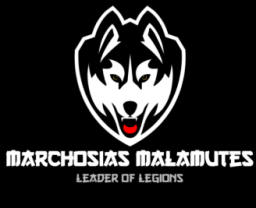Cytology
Trained to the highest standard: Our team of professionals undergo rigorous training to ensure they are equipped with the necessary skills and knowledge to provide an amazing service. We believe in continuous learning and development to stay up-to-date with the latest industry practices.
Professional, fully regulated environment: We take pride in maintaining a professional and fully regulated environment for our clients. From our state-of-the-art facilities to our adherence to industry standards and regulations, we strive to create a safe and secure space for all our customers.
Amazing service: At every step of the way, we are committed to delivering an amazing service that exceeds our customers' expectations. From the moment you walk through our doors, our friendly and knowledgeable staff will ensure your experience is nothing short of exceptional.
Vaginal Cytology Testing
The Most Accurate ovulation test
Cytology is the examination and study of blood or tissue cells under a microscope that can be done in dogs and other animals. Cytology can be used to detect inflammation, infection, bacteria, fungi, parasites and cancer.
Cytology involves examination of a tissue or fluid sample. Cytology of vaginal fluid can be used to guide breeding in female dogs.
What Does Cytology Reveal in Dogs?
Cytology can identify the presence of inflammation, infection, cancer, parasites, bacteria and fungi (molds and yeast). Following cytology, additional diagnostic tests, procedures, or medications may be recommended.
How Is Cytology Done in Dogs?
Cytology testing involves obtaining a sample of suspicious material. The material can be obtained by pressing a microscope slide against the tissue, by gently scraping the area with a scalpel blade, or by inserting a needle or sterile Q-tip into the tissue to obtain fluid or tissue.
Once obtained, the material is spread thinly over a microscope slide and allowed to dry. Fluid samples may be placed in a centrifuge first to concentrate the cells before they are transferred to the slide. The sample is then dyed with special biological stains to ease identification of the cells. The sample is once again allowed to dry.
Once the dye has dried, the slide is ready for microscopic evaluation.
The cytology test generally takes 20 to 30 minutes to perform if done in the comfort of your own home.
Is Cytology Painful to Dogs?
In obtaining a sample with a cotton bud, no pain will be involved, but very small cotton wool bud is typically are used.. Pain from a cotton stick varies among individual dogs, but it should not be any more painful than an injection or a blood sample.
Is Sedation or Anesthesia Needed for Cytology?
Sedation or anesthesia is not typically needed, but might be necessary depending on how the cytology sample is collected. Those samples obtained from skin scrapings or aspirations typically do not require sedation. Obviously, a sample obtained during a surgical procedure will require anesthesia for the surgery.
Vaginal Cytology Test Under Microscope
The video shows a Vaginal Cytology under way, which is a procedure performed in Canine Cytology. In this process, your Pathologist, who is an expert in cell formation, carefully examines the vaginal cells of your dog. They analyze the morphology and characteristics of these cells to determine the stage of the estrous cycle or diagnose any potential abnormalities. Once the procedure is completed, your Pathologist will provide valuable feedback and insights based on their expertise in English.
We need your consent to load the translations
We use a third-party service to translate the website content that may collect data about your activity. Please review the details in the privacy policy and accept the service to view the translations.
